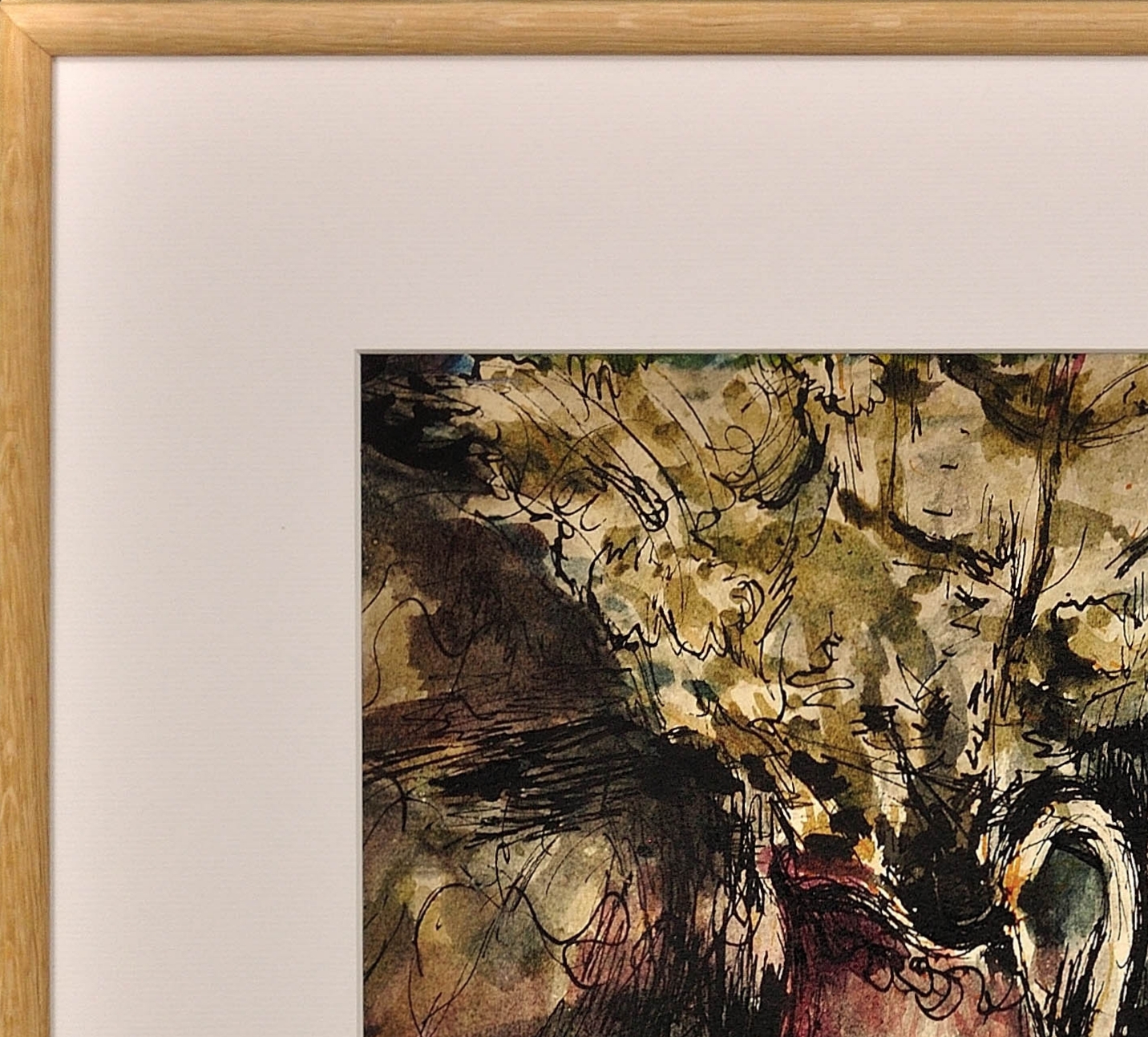James Tower
English ( b.1919 - d.1988 )
Still Life Of Flowers In A Jug & A Bowl Of Apples, 1944
| Image size | 211.4 inches x 13.2 inches ( 29cm x 33.5cm ) |
| Frame size | 18.1 inches x 19.7 inches ( 46cm x 50cm ) |
£2,795.00
Available for sale from Big Sky Fine Art in the English county of Dorset, this original wartime painting is by the English ceramic artist James Tower and is dated 1944.
The watercolour is presented and supplied in a sympathetic contemporary frame (which is shown in these photographs), mounted using new conservation materials and behind non-reflective Artglass AR 70™glass.
This vintage painting is in good condition, commensurate with its age. The painting is now preserved for future adoration and is ready to hang and to be appreciated.
The watercolour is signed and dated upper right.
One of Britain’s most important 20th-century ceramic artists; a quintessentially English sculptor, painter and teacher who was dedicated to his craft.
James Tower was born on the Isle of Sheppey in Kent, and brought up in a landscape of tidal estuaries, reeds, fish, shells and patterns of water on sand that greatly influenced his later work. He had a childhood accident that blinded him in one eye.
He left home at 17 and decided to travel the world, eventually making his way to the South Seas. On his return, he studied painting at the Royal Academy, (1938-40), and his talent was recognised when he won the Gold Medal for Painting in 1939.
During the Second World War he enrolled for service and spent the war working in camouflage and mapping at the Polish Ministry of Information. He married fellow student Maureen McManus in 1944. After the war he returned to art, enrolling at the Slade School of Art in 1946. Here he attended Dora Billington’s classes and became fascinated with ceramics. After he graduated, he took further classes in the medium at the London Institute under the British potter William Newland.
In 1949 Tower was invited to set up a ceramics course at the progressive Bath Academy, Corsham. Here he became a celebrated teacher, setting up Pottery in old stables at Beechfield, and taught all aspects of ceramics including technology, taking students on local excavations. He established a diverse artistic environment, teaching and working alongside artists such as Terry Frost, Kenneth Armitage, William Scott and Peter Lanyon. Surrounded by such individualistic and impassioned artists, Tower began to develop his own unique approach to ceramics. His work was characterised by an emphasis on abstract; organic forms and painterly surfaces, evoking notions of nature, particularly foliage, water and the landscape. In 1963 he won a Leverhulme Research Award for terracotta research. Tower remained in post at Bath until 1964.
In 1966 he became Head of Fine Art at Brighton College of Art, where he set up a sculpture course and remained in post until 1986.
As a sculptor and ceramicist Tower is known for his domestic pottery, terracotta sculpture and large glazed forms. He often used the sea as a motif in his work, using wave patterns to create a sense of movement, and his textured surfaces are reminiscent of shells and crustaceans.
Tower had his first exhibition with fashionable Gimpel Fils, London, in 1951, and many others followed there. His work, including paintings and drawings, was included in ‘Corsham A Celebration’, at the Victoria Art Gallery, Bath, 1988-9 and tour, and his solo exhibitions included the Gardner Centre, University of Sussex, 1967, and America at Art Latitude, New York, 1979. During the 1960s 3 of his works were exhibited at the Royal Academy.
Tower was something of a perfectionist and often destroyed works that did not satisfy him, so his oeuvre is relatively modest. His paintings are much rarer than his sculptures.
He lived the latter part of his life outside Lewes in East Sussex, - a landscape of sea views, chalk downs, streams, cliffs and flinty fields, that continued to influence his work. He died in Sussex in 1988. He was described posthumously by Antony Gormley as “a wonderful artist, father and teacher…always interested in the inner life of people, places and things and he has left behind a body of work that celebrates this.”
A comprehensive biography and catalogue of his work was published in 2012, Ceramic Art of James Tower, by Timothy Wilcox, and this is now accepted as the standard source of reference to his work.
Tower’s career was pioneering in that he pushed boundaries and intertwined art and ceramics in a way which was at the time quite rare. There was a major retrospective of Tower’s work at the Victoria at Art gallery in Bath in 2019, to coincide with the centenary of his birth.
Today, Tower’s artwork is held in many prestigious public and private collections. Examples can be seen in the Victoria & Albert Museum in London, the Museum of Modern Art in New York and The Art Institute of Chicago.
© Big Sky Fine Art
This is an original watercolour painting by English ceramics artist, sculptor and teacher James Tower. It is signed and dated 1944, which is a period when he would have been still working as part of the war effort, shortly before he resumed his formal art studies. The painting is a still life, depicting a tall, rounded jug with a bunch of loose flowers, and a plate with four apples, on a tabletop. Behind there is a broad vertical wooden beam and an interior wall. Even as this early stage in his artistic career there is a certain style, a sense of a real understanding of form and dimension, and a clear interest in ceramics. The palette is muted and warm, giving this painting an autumnal feel.












 Still Life Of Flowers In A Jug & A Bowl Of Apples, 1944 - Tower, James
Still Life Of Flowers In A Jug & A Bowl Of Apples, 1944 - Tower, James